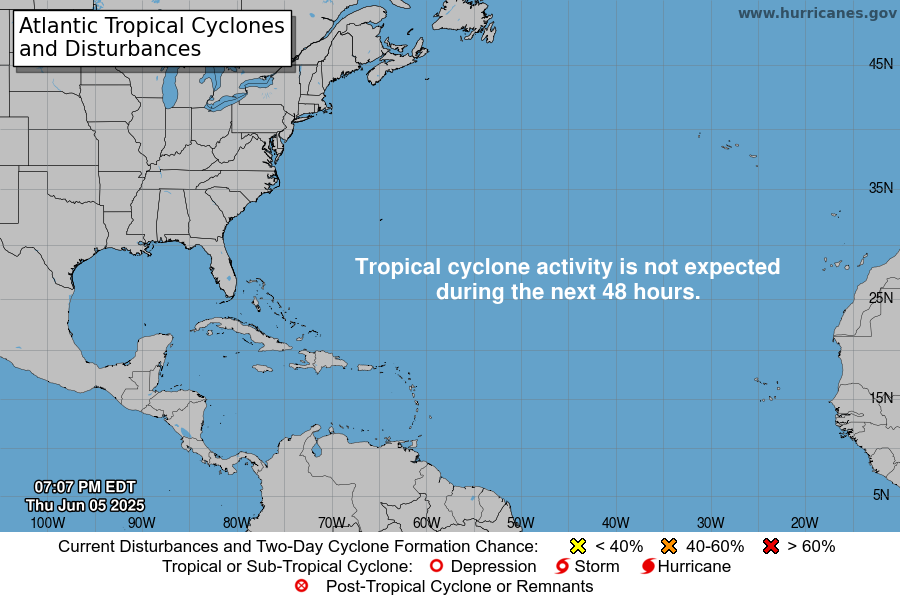Archive for the ‘Tropical storms’ Category
Cindy makes landfall: Blamed for widespread coastal highway flooding, rough seas, scattered power outages, building damage caused by high winds, and 1 death.
Thursday, June 22nd, 2017



USDA Invests $103 Million to Protect Lives, Property After Natural Disasters
Monday, February 27th, 2017USDA Office of Communications sent this bulletin at 02/22/2017 03:11 PM EST

You are subscribed to USDA Office of Communications.
| Release No. 0015.17 |
| Contact: |
| USDA Office of Communications |
| press@oc.usda.gov |
| (202) 720-4623 |
| USDA Invests $103 Million to Protect Lives, Property After Natural Disasters |
| WASHINGTON, Feb. 22, 2017 – Acting Deputy Agriculture Secretary Michael Young today announced U.S. Department of Agriculture (USDA) is investing up to $103 million in fiscal year 2017 for disaster recovery efforts to help state, local and tribal units of government protect lives and property in disaster-affected areas following natural disasters.
Local units of government, or sponsors, will use financial and technical assistance from the Emergency Watershed Protection Program (EWP Program) to carry out much-needed recovery projects to remedy damages caused by natural disasters such as floods and hurricanes. Nearly $9 million will be used to fund disaster recovery projects, such as debris removal and streambank stabilization, in Florida, Georgia, North Carolina and South Carolina that will repair damages caused by Hurricane Matthew, a powerful storm that roared up the East Coast in late September through early October 2016. Up to 70 percent of this fiscal year’s financial assistance funding will be used by USDA’s Natural Resources Conservation Service (NRCS) to purchase floodplain easements in Louisiana. In August 2016, severe flooding devastated sections of two of Louisiana’s largest cities—Baton Rouge in southcentral Louisiana and Shreveport in northwestern Louisiana. “America’s communities rely upon the stability USDA emergency programs provide when unpredictable disasters hit” Young said. “The Emergency Watershed Protection Program funds will support diverse recovery projects including clearing debris-clogged waterways, stabilizing streambanks and repairing damaged water-control structures in local communities to make them resistant to future threats.” Congress designates funding for the EWP Program. The fiscal year 2017 funding is included in the continuing resolution signed by Congress in early December 2016 to keep the federal government operating through April 2017. Initial funding requests and projects approved for the five states are included below. States will continue to submit requests for EWP disaster recovery assistance and the remaining funds will be used to help communities cope with the adverse impacts from existing and future natural disasters. Louisiana – $65 million for the purchase of floodplain easements on private land owned by individuals and public land owned by local, state and tribal governments after severe flooding adversely impacted eastern Louisiana in August 2016. In the city of Baton Rouge, approximately 30 homes in a development in Livingston Parish and about 20 homes in Pointe Coupee Parish will be demolished and the flood-prone land restored to its natural condition. Signups will be held in the two areas to enroll the land into the EWP-floodplain easement option. Florida – up to $3.1 million for disaster recovery projects to address impacts and damages from Hurricane Matthew including debris removal in Putnam and Volusia counties and channel bank stabilization in Brevard County. Georgia – up to $97,000 for projects to address impacts and damages from Hurricane Matthew including debris removal in Brantley County. North Carolina – $908,000 for projects to address impacts and repair damages caused by Hurricane Matthew including sediment removal and streambank stabilization to protect roads and a waste water treatment plant in eastern North Carolina. South Carolina – up to $5.7 million for projects to address impacts and damages from Hurricane Matthew including debris removal in the counties of Beaufort, Charleston and Horry; towns of Hilton Head Island, Mount Pleasant and Summerville; and Horse Range Watershed Conservation District in Orangeburg County. The EWP Program helps communities carry out much-needed recovery projects to address damages to watersheds caused by hurricanes, floods, fires, windstorms, wildfires and other natural disasters. EWP offers two options— disaster recovery and permanent floodplain easements. Privately-owned land or public lands owned by local, state or tribal units of government are eligible for USDA assistance through the EWP Program. NRCS provides 75 percent of the funds for recovery projects and the public entity pays the remainder in cash or in-kind services. Floodplain easements are purchased and held by the USDA NRCS. Landowners are compensated for the surface easement and retain ownership of the properties enrolled. |
Wilson County, NC & Hurricane Matthew: The Aftermath
Saturday, November 12th, 2016
Nov 10, 2016
By Olivia Neeley
The Wilson Daily Times
- More than 530 Wilson County residents registered with the Federal Emergency Management Agency for assistance after Hurricane Matthew
- The 530-plus individuals FEMA assisted received more than $640,000 disbursement in funds countywide.
- The 911 Communications Center received 2,500 calls for service over the three-day period during and after Hurricane Matthew.
- There were roughly 230 water rescues performed during the height of the storm, most of which were vehicles rescues and getting people out of houses that were threatened by water.
- Two people were also killed in Wilson County as a result of moving water in the roadways. Their vehicles were swept away.








![[Image of WPC QPF U.S. rainfall potential]](http://www.nhc.noaa.gov/storm_graphics/AT03/refresh/AL0317WPCQPF+gif/173424WPCQPF_sm.gif)



